Eimmart: the death of Turnus
Annotations
Aeneas stands before two armies, bristling with lances in the background. The fallen Turnus, wearing the sword-belt of Pallas, has a sword in his the chest and over him flutters an owl. The engraving does not illustrate the verses XII 926f. with the wounding of Turnus in the thigh by the lance throw of Aeneas, but the closing verses XII 950-952.
Aeneas stößt- vor zwei lanzenstarrenden Heeren im Hintergrund- dem am Boden liegenden Turnus, der den Schwertgurt des Pallas trägt und über dem ein Käuzchen flatter, das Schwert in die Brust. Illustriert werdenalso nicht die Verse XII 926f. mit der Verwundung des Turnus am Oberschenkel durch den Lanzenwurf des Aeneas, sondern die Schlussverse XII 950-952. (Suerbaum)
Engraving from a German children’s picture-book version of the Aeneid by G. J. Lang and G. C. Eimmart, “A tapestry of Roman virtues as seen in Vergil’s Aeneas and his brave deeds, rendered in sparkling engravings, as illustrations of the remarkable deeds of antiquity, for the common benefit of noble youth,” (Peplus virtutum Romanarum in Aenea Virgiliano eiusque rebus fortiter gestis, ad maiorem antiquitatis et rerum lucem, communi iuventutis sacratae bono, aere renitens) (Nuremburg: J.L. Buggel, 1688), pl. 50.

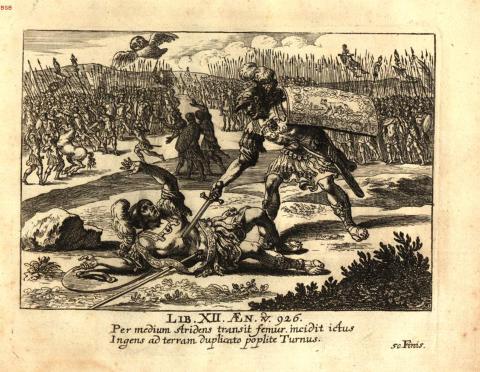
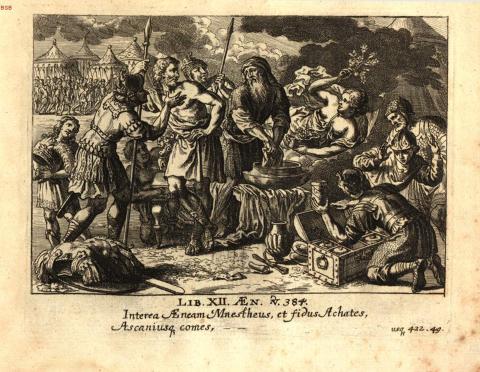
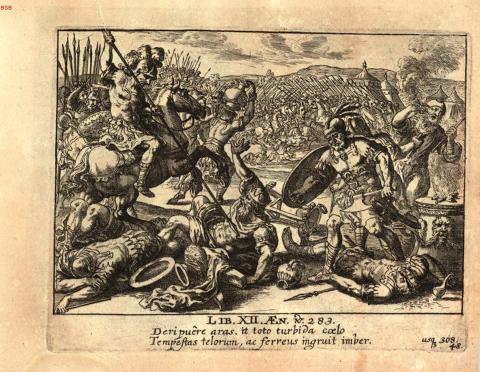
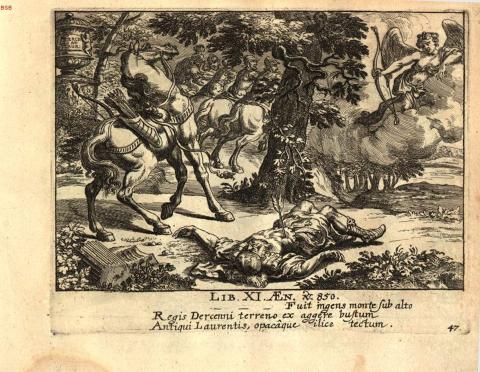
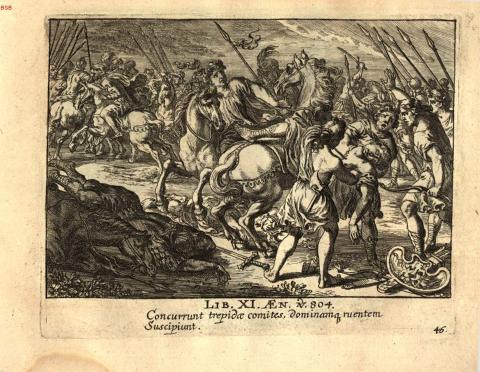
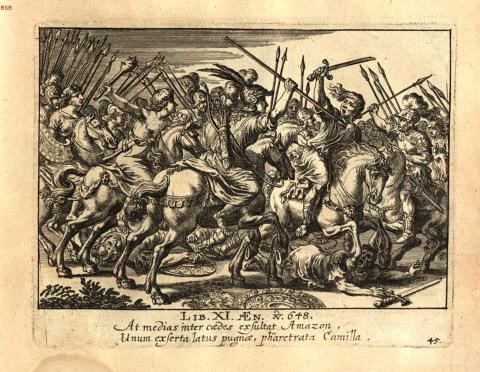
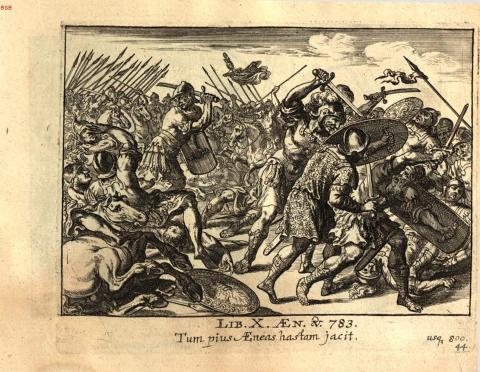

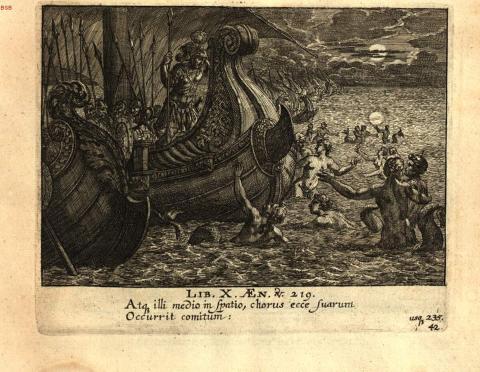

The final scene of the Aeneid is Turnus’ defeat and death at Aeneas’ hands. Turnus lies on the ground, taken down by a spear to the thigh (line 926). Above him flies an owl, one of the Dirae sent down by Jupiter at line 845, and not to be confused with the owl attributed to Minerva. In lines 861-888 she takes on the form of a bird and flies at Turnus’ face, an ill omen, which his sister divine Juturna recognizes. In the engraving the owl seems to cast a shadow on the men beneath it, and Turnus’ arm is raised as much in defense against the bird as against Aeneas. The leader of the Trojans, carrying his famous shield, has just seen the sword-belt of Pallas around Turnus’ body. Turnus’ words of supplication had been about to sway Aeneas towards mercy, but seeing the reminder of the dead boy pushes Aeneas in the opposite direction and he kills Turnus in the name of Pallas. In the second to last line of the poem, Turnus’ death is described with exactly the same words as Aeneas’ entrance at line 92 in Book I: “solvuntur frigore membra…” (Lucy McInerney)